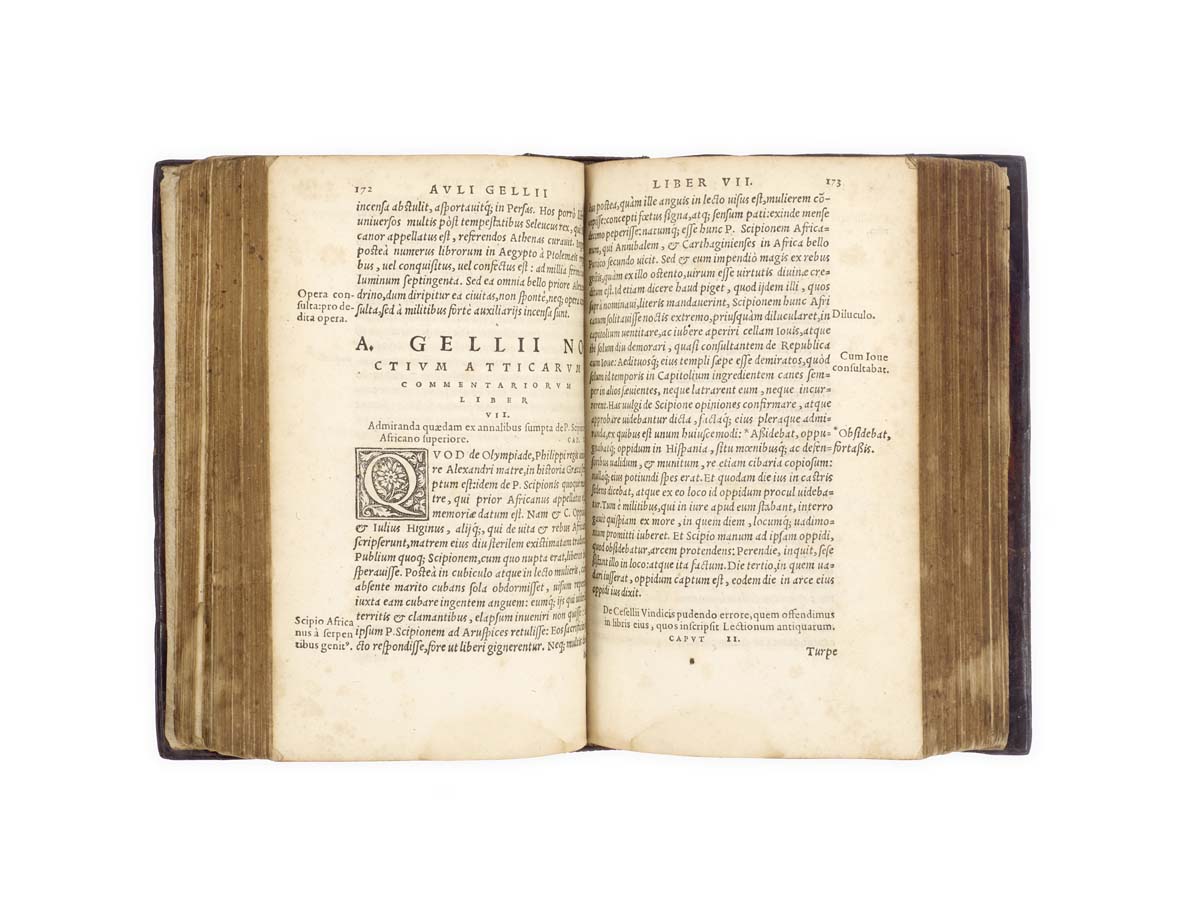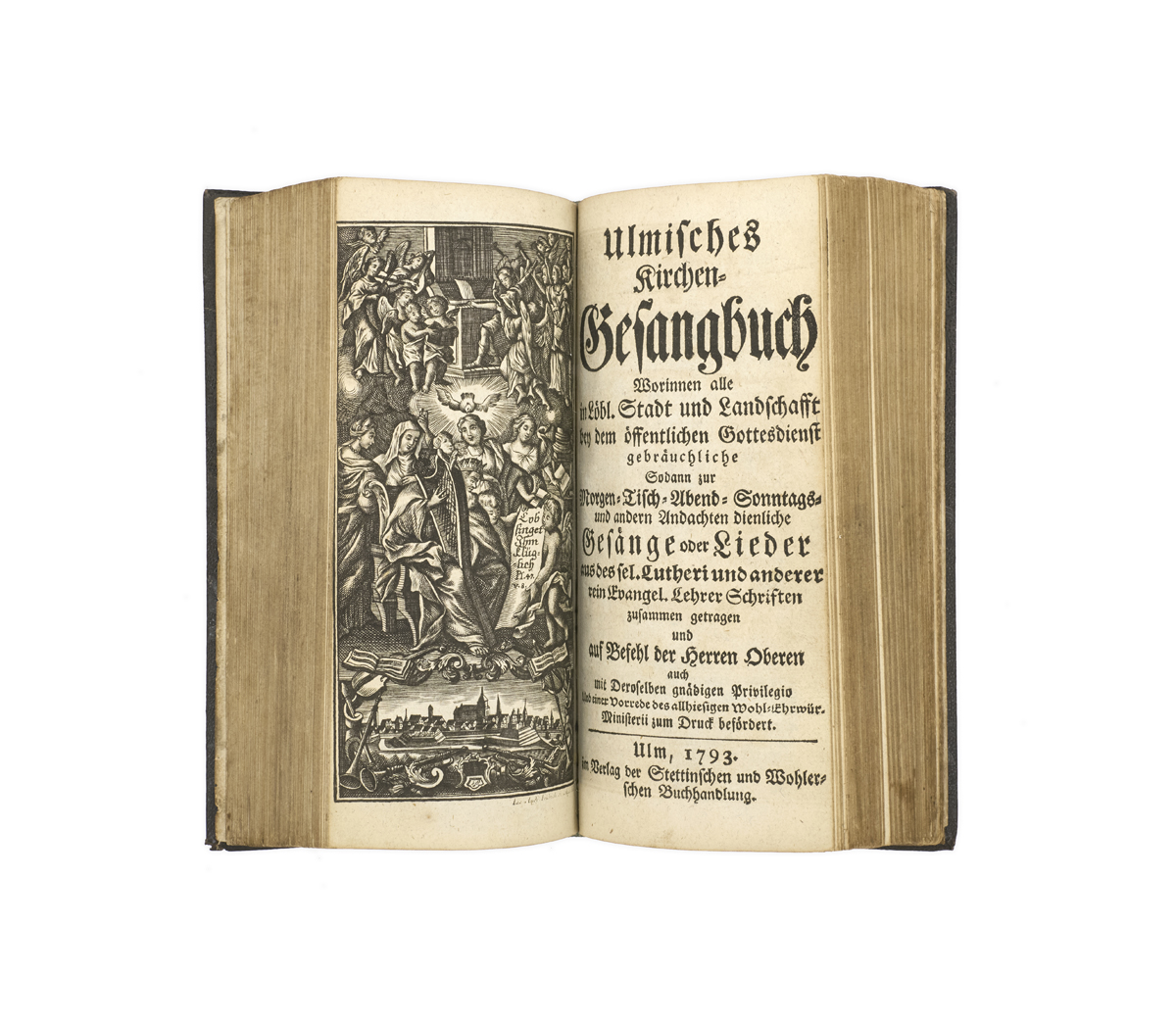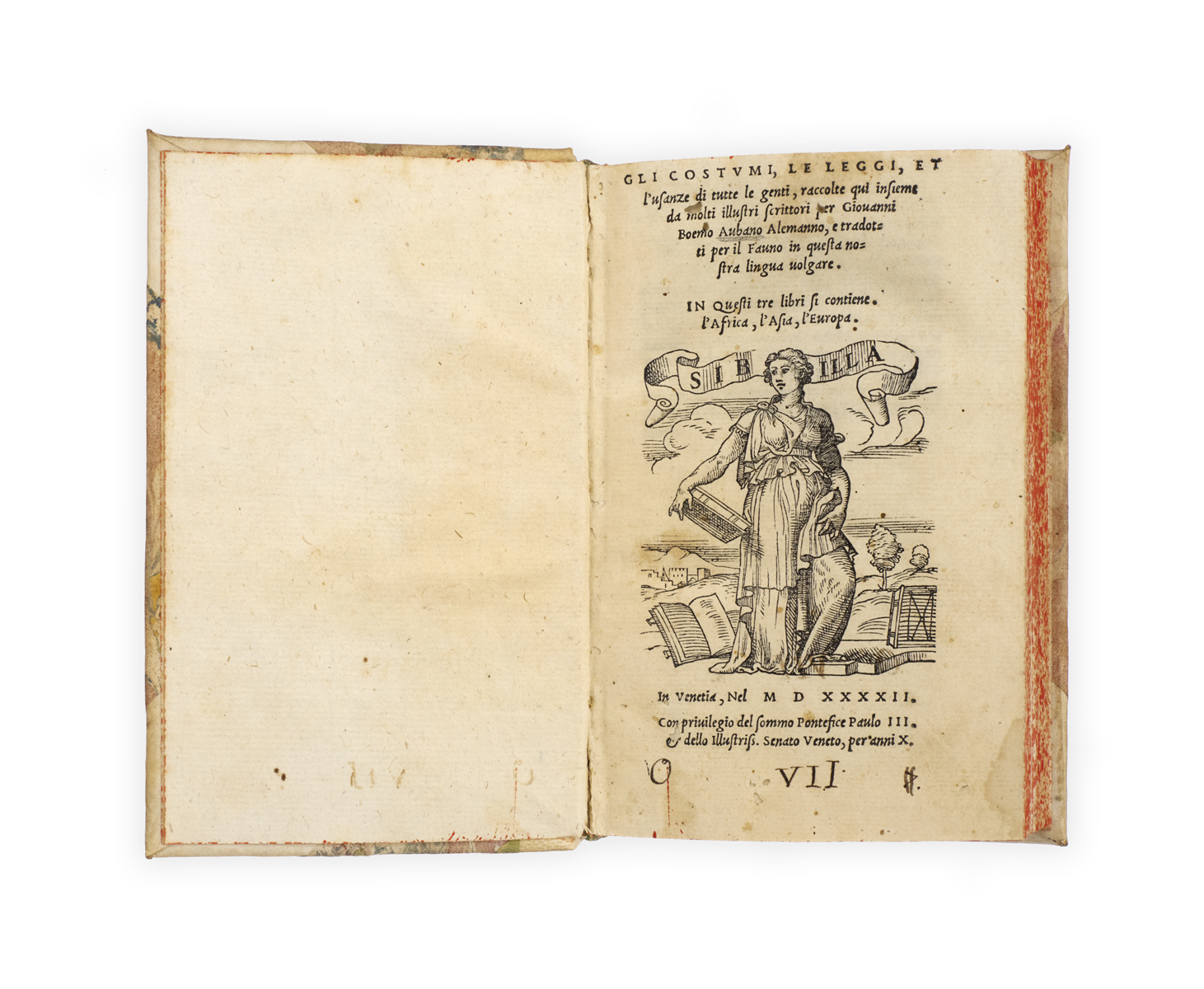
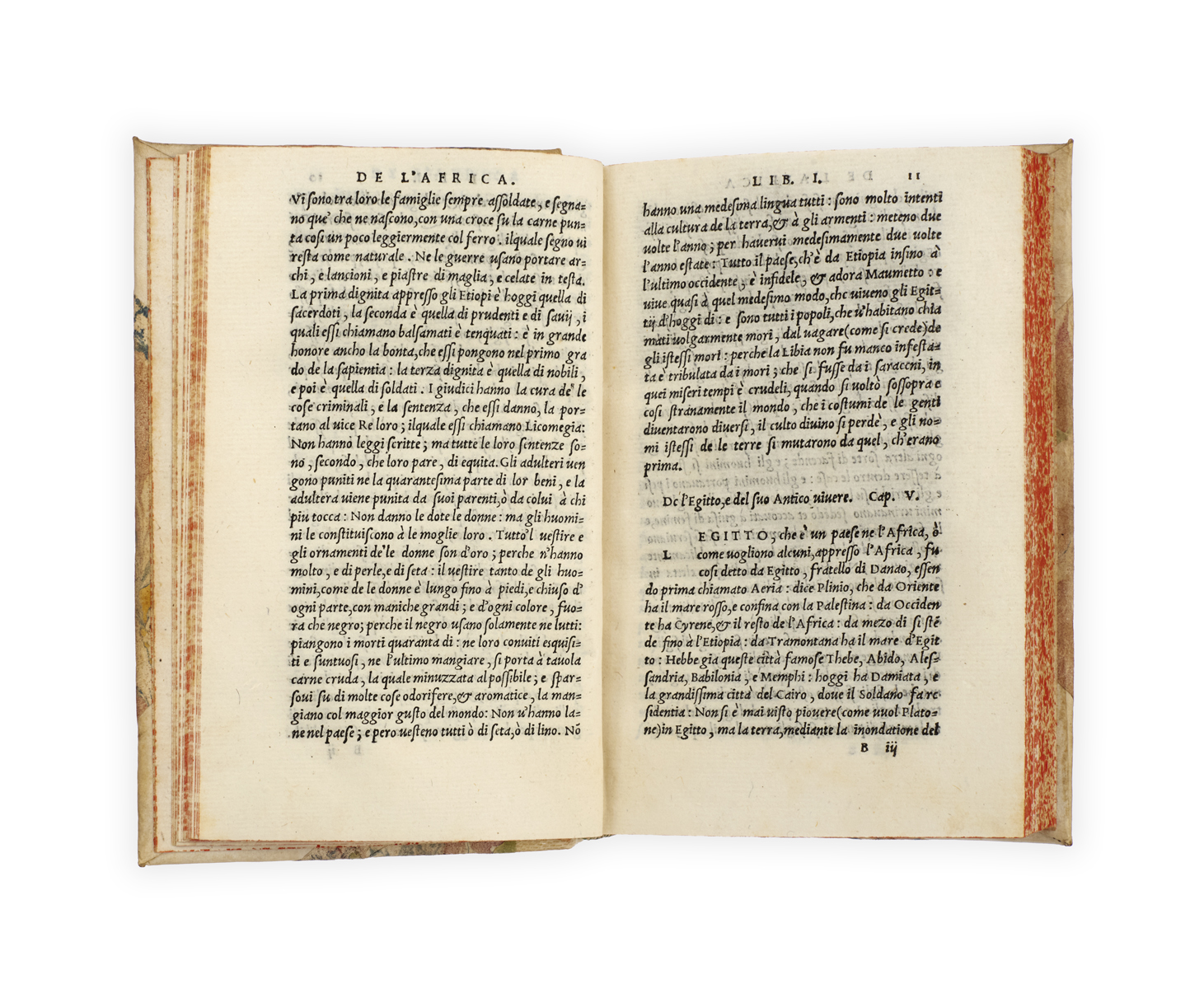
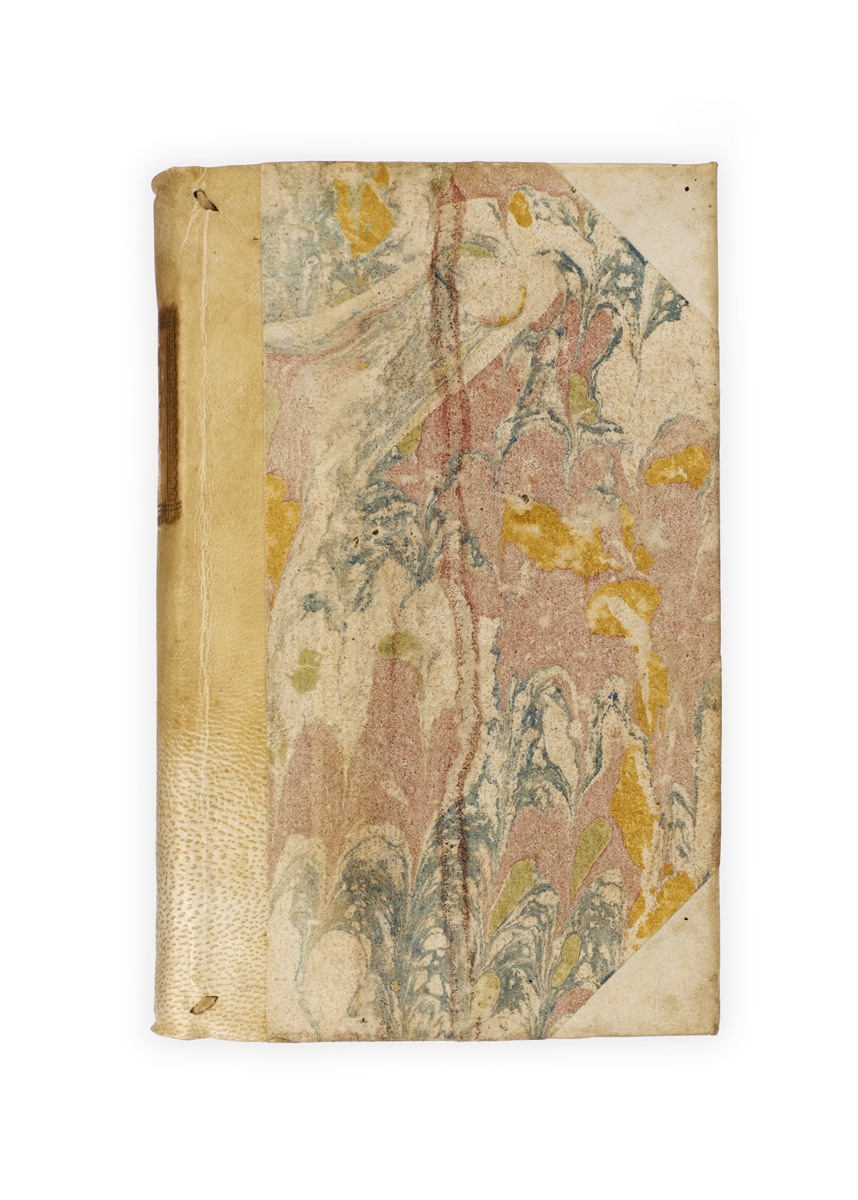
THE FIRST MODERN ETHNOGRAPHIC COMPENDIUM
BOEMUS, Johann, and ‘Lucio FAUNO’ [pseud. Giovanni TARCAGNOTA] (translator).
Gli costumi, le leggi, et l’usanze di tutte le genti raccolte qui insieme da molti illustri scrittori … In questi tre libri si contiene l’Africa, l’Asia, l’Europa.
Venice, Michele Tramezzino, 1542.
8vo, ff. [11], 4-187, [1], woodcut Sibyl device to title and final leaf verso; a few pinhole wormholes to title-page (touching three characters) and to two final leaves (not touching text), otherwise very clean and fresh; a handsome copy in early nineteenth-century half vellum with marbled sides, title gilt to spine directly, red sprinkled edges; ink shelfmarks to title (‘O VII. 7’) and title verso (‘O VII. 8').

Added to your basket:
Gli costumi, le leggi, et l’usanze di tutte le genti raccolte qui insieme da molti illustri scrittori … In questi tre libri si contiene l’Africa, l’Asia, l’Europa.
First edition in Italian of Johann Boemus’s influential ethnographic compendium, a sixteenth-century bestseller considered the first of its kind.
Johann Boemus, also known as Johannes Böhm, (c. 1485–1535) was a canon and Hebraist from Aub, Bavaria. First published in 1520, his Omnium gentium mores, leges et ritus is considered the first modern ethnographic compendium, ‘an original encyclopaedia of the customs, institutions, and rites of the peoples of Africa, Asia, and Europe (but not the Americas), founded mainly on classical and humanist authors’ (Marcocci, p. 88). During the sixteenth century, the work was reprinted multiple times and translated into several languages (William Waterman’s English translation appeared in 1555). The translator of the present edition, Giovanni Tarcagnota (c. 1508–1566), (here identified by his pseudonym, ‘Lucio Fauno’) was born into a family of aristocratic Byzantine émigrés and translated from Latin into Italian several other works by fifteenth- and sixteenth-century authors, notably Flavio Biondo and Marsilio Ficino, which were all printed by Michele Tramezzino in the 1540s and 1550s.
Gli costumi, le leggi, et l’usanze di tutte le genti is divided into three sections: the first, opening with a discussion of the origins of humanity, is dedicated to the inhabitants of Africa, particularly Ethiopia and Egypt; section two is devoted to Asia, including the Middle East, Persia, India, Tartary, and Turkey, and concludes with a long digression on the origins of Christianity; the final and longest section is devoted to Europe, with a particular focus on Central and Eastern Europe. In his introduction, Tarcagnota describes Boemus’s book as ‘a sea of the most beautiful and useful examples’. For this reason, he argues, ‘the manners and traditions of so many peoples … are no other than so many mirrors, through which we should mould our soul and body, adorning ourselves with the fine and good and scorning and throwing away as savage and evil the bad’ (f. iv, trans. Marcocci, p. 89).
EDIT16 6525; USTC 815048; Brunet I, p. 1030; Sabin 6117; not in Adams. See Lach, Asia in the making of Europe II/ii pp. 336-7; Marcocci, The Globe on Paper (2020).
